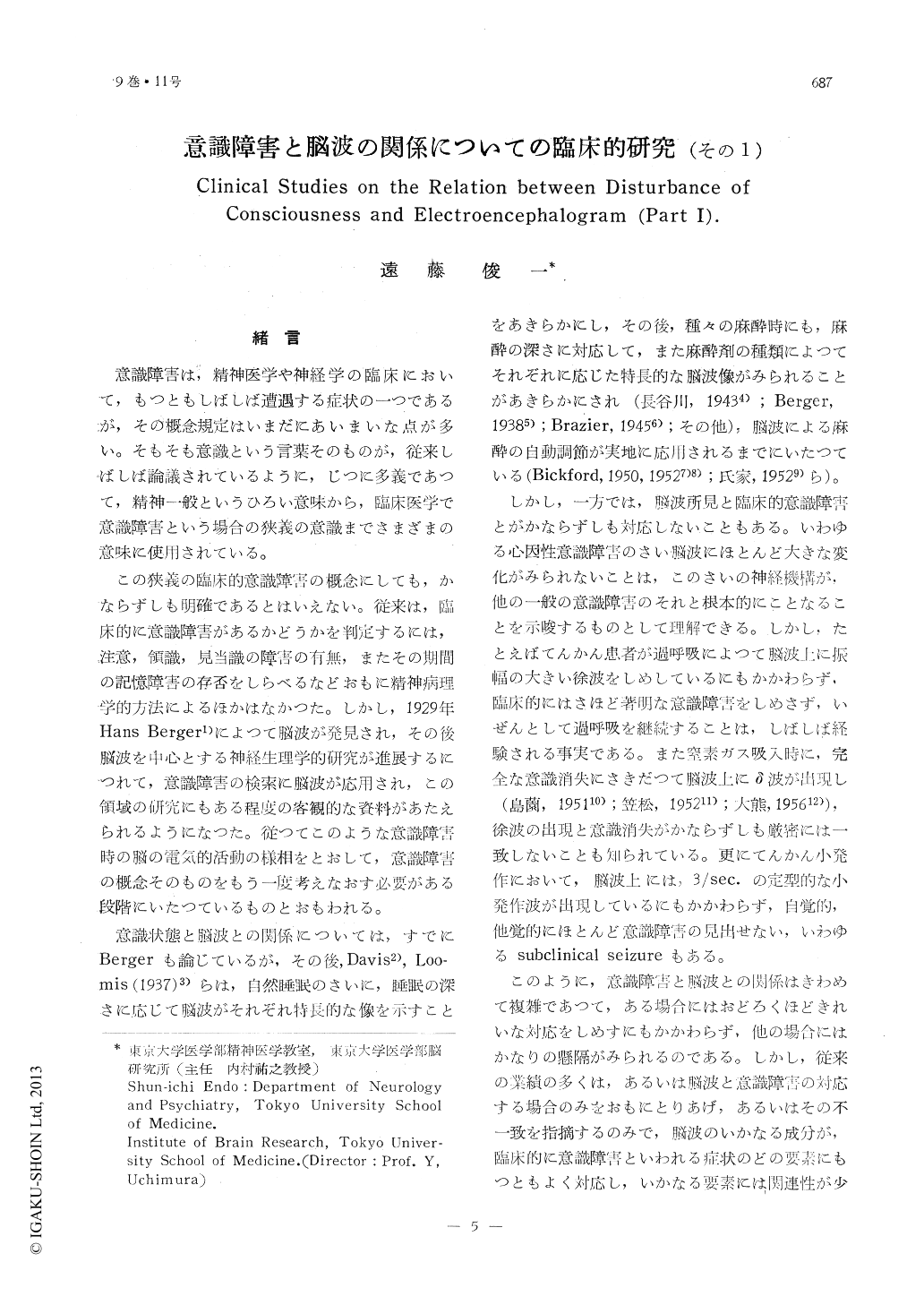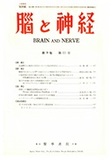Japanese
English
- 有料閲覧
- Abstract 文献概要
- 1ページ目 Look Inside
緒言
意識障害は,精神医学や神経学の臨床において,もつともしばしば遭遇する症状の一つであるが,その概念規定はいまだにあいまいな点が多い。そもそも意識という言葉そのものが,従来しばしば論議されているように,じつに多義であつて,精神一般というひろい意味から,臨床医学で意識障害という場合の狭義の意識までさまざまの意味に便用されている。
この狭義の臨床的意識障害の概念にしても,かならずしも明確であるとはいえない。従来は,臨床的に意識障害があるかどうかを判定するには,注意,領識,見当識の障害の’有無,またその期間の記憶障害の存否をしらべるなどおもに精神病理学的方法によるほかはなかつた。しかし,1929年Hans Berger1)によつて脳波が発見され,その後脳波を中心とする神経生理学的研究が進展するにつれて,意識障害の検索に脳波が応用され,この領域の研究にもある程度の客観的な資料があたえられるようになつた。従つてこのような意識障害時の脳の電気的活動の様相をとおして,意識障害の概念そのものをもう一度考えなおす必要がある段階にいたつているものとおもわれる。
The correlation between the state of con-sciousness and EEG was studied on 5 cases of hepatocerebral degeneration (loose-type), 18 cases of psychomotor epilepsy and 30 cases of petit mal epilepsy.
1) In the cases of hepstocerebral degenera-tion, EEG showed gradual changes correspond-ing with the advance of disturbance of con-sciousness. That is, alpha activity disappeared at first and was replaced by theta activity and then the stage of triphasic wave and delta activity followed. There were, however, some exceptional cases in which EEG and disturbance of consciousness did not show clear correlation.
2) Electroencephalographic patterns during psychomotor seizures were divided into 4 types: I) regular 4-8/sec. large slow waves that continued in the course of seizure, II) large irregular slow waves, III) almost flat wave pattern, IV) no remarkble changes dur-ing the seizure. In the cases of type I and II disturbance of consciousness was severe and automatic movements were simple and primitive, while in the type IV, disturbance of consciousness was slight while emotional or psychic symptoms were predominant.

Copyright © 1957, Igaku-Shoin Ltd. All rights reserved.


